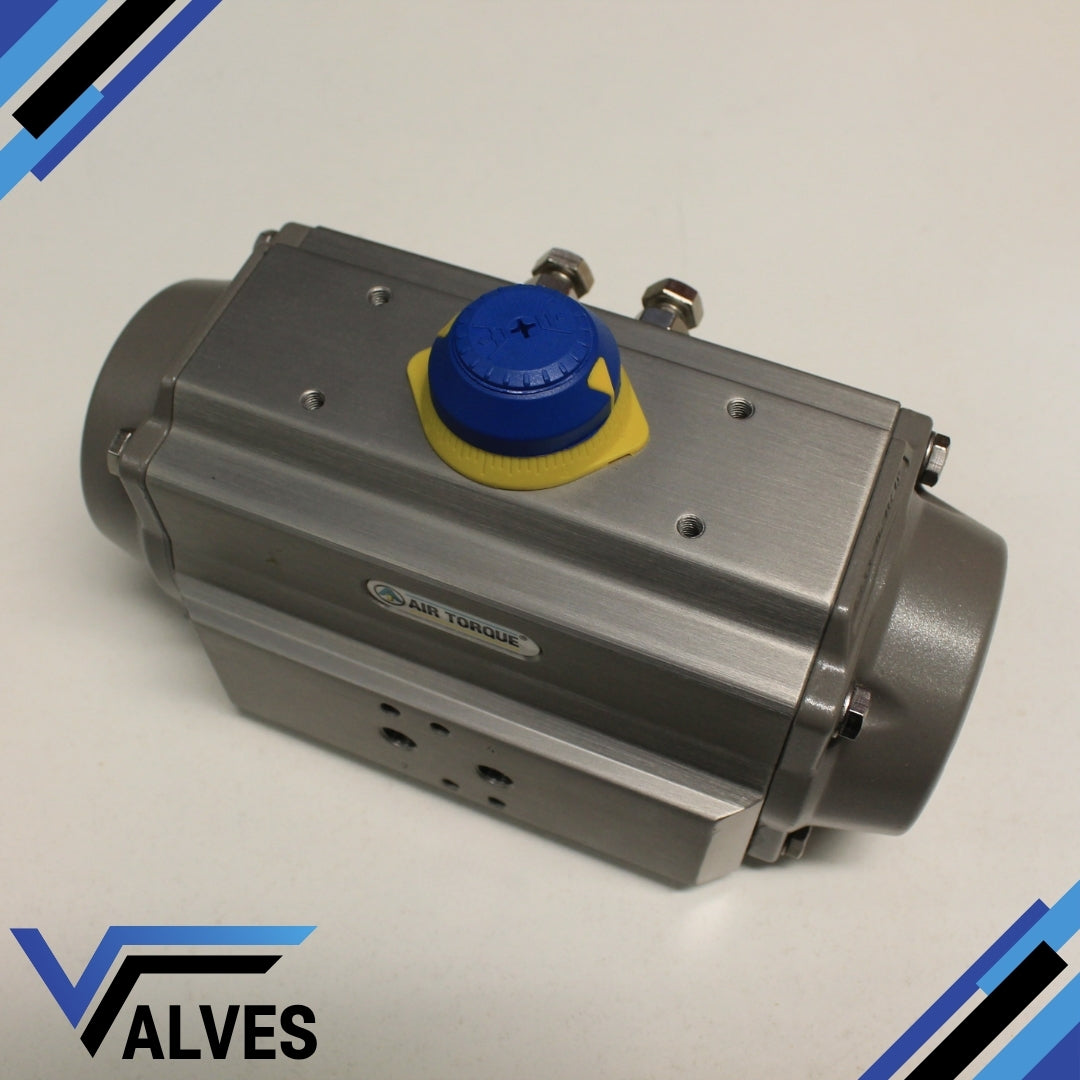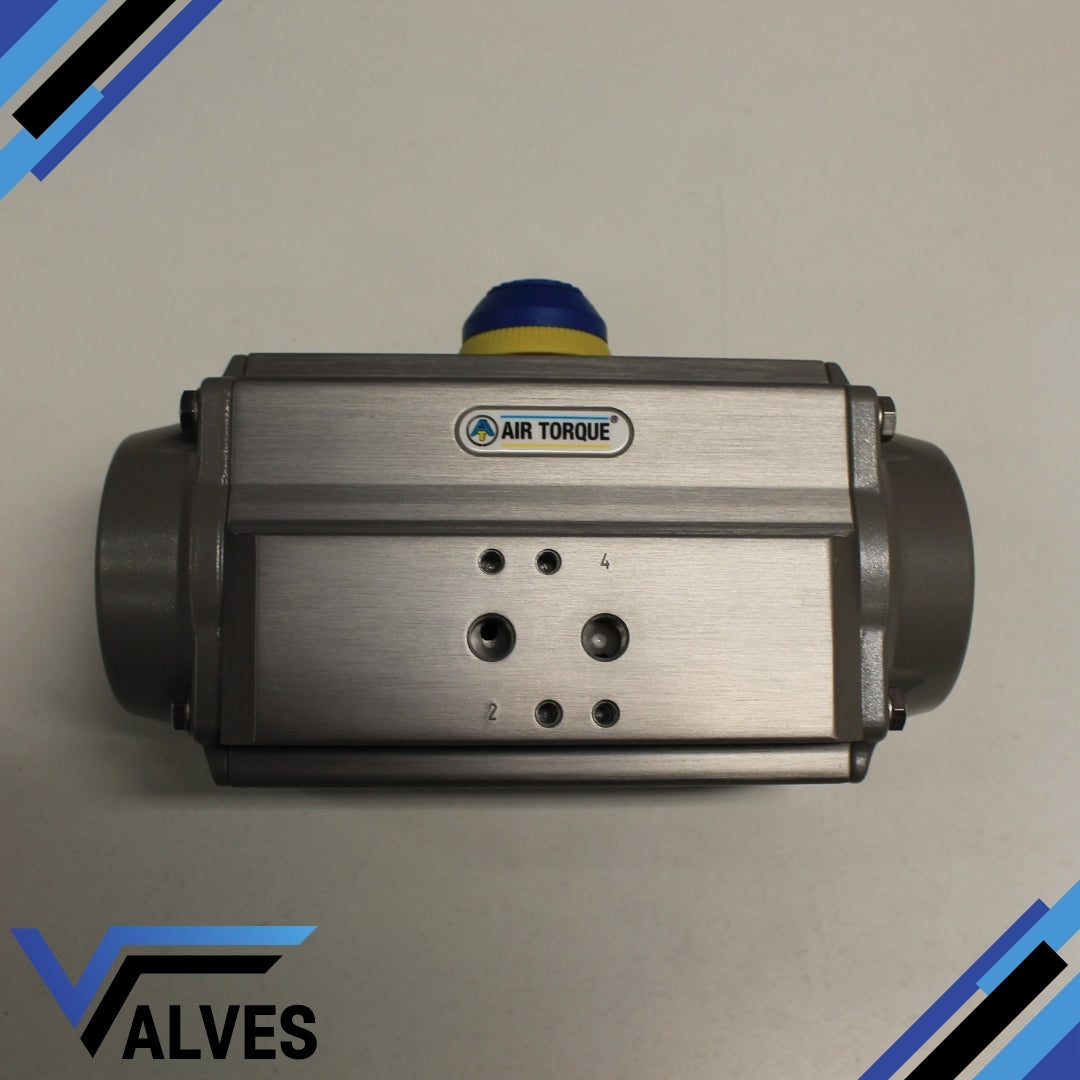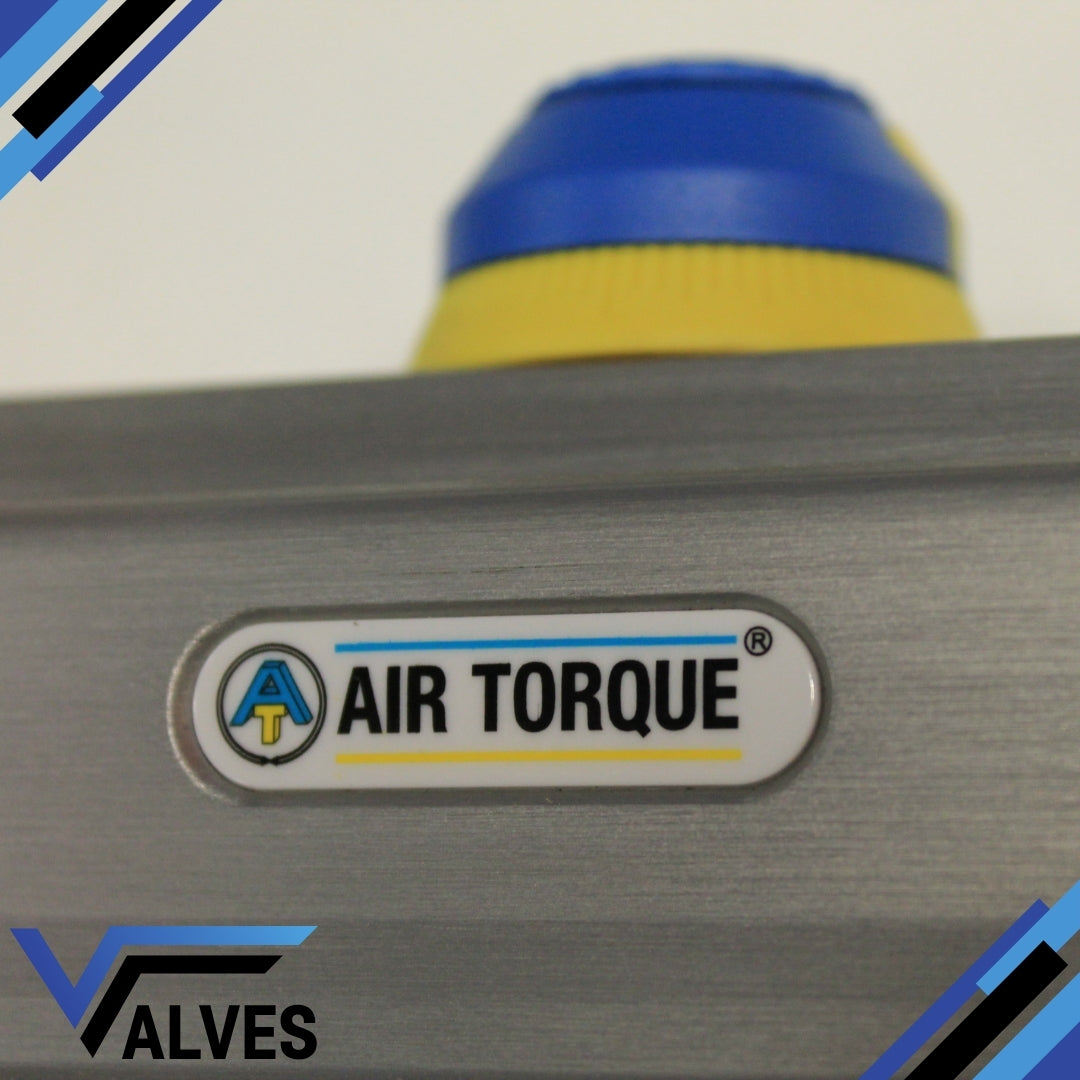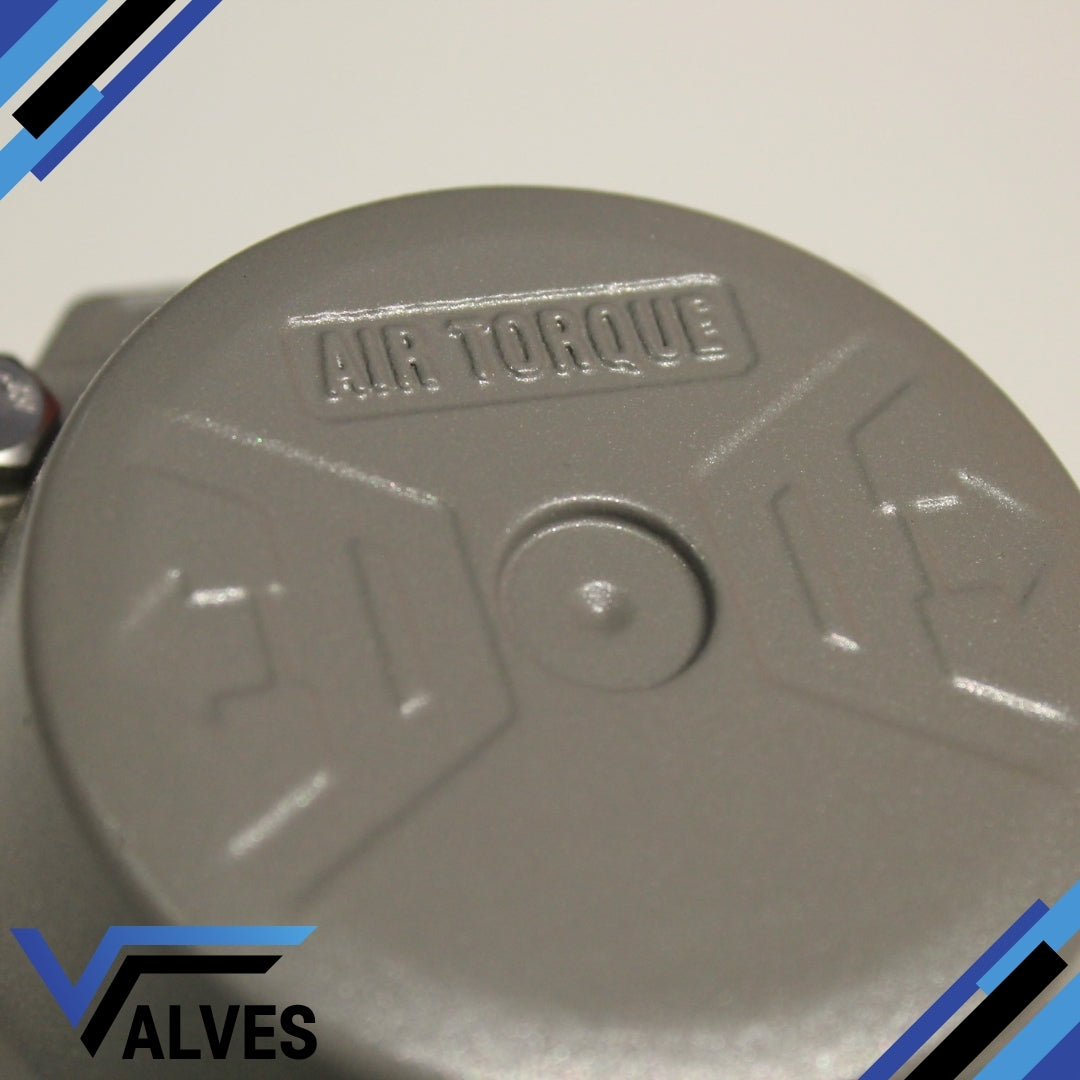Valves UK
Air Torque Spring Return Pneumatic Actuator
Air Torque Spring Return Pneumatic Actuator
Couldn't load pickup availability
The Air Torque Spring Return Pneumatic Actuator is a single-acting rotary actuator designed to deliver reliable, automatic valve operation with a built-in fail-safe mechanism. When air pressure is applied, the actuator opens or closes the valve, and when the air supply is lost, the internal spring mechanism returns it to the default (safe) position, ensuring safety and control in critical applications.
Key Features:
Operation: Single-acting (spring return)
Motion: 90° rotary operation
Mechanism: Rack and pinion
Body material: Hard-anodised aluminium for corrosion resistance
Fail-safe function: Spring returns to safe position on air loss
Mounting: ISO 5211 compliant for easy valve integration
Compact and lightweight design
Smooth torque output across the full rotation
Ideal for ball valves, butterfly valves, and dampers
Designed for harsh industrial environments
Models:
AT045U-S6-A F03-N-9D
AT051U-S6-A F03-N-9D
AT051U-S6-A F04-N-11DS
AT101U-S10-A F04 F07-N-11DS
AT201U-S10-A F05 F07-N-17DS
AT251U-S10-A F05 F07-N-17DS
AT301U-S10-A F07 F10-N-22DS
AT351U-S10-A F07 F10-N-22DS
AT401U-S10-A F07 F10-N-27DS
AT451U-S10-A F10 F12-N-27DS
AT501U-S10-A F10 F12-N-27DS
AT551U-S10-A F14-N-36DS
AT601U-S10-A F14-N-36DS
AT651U-S10-A F16-N-46DS
AT701U-S10-A F16-N-46DS
AT751U-S10-A F16-N-46DS
AT801U-S10-A F16 F25-N-55DS
AT1001U-S10-A F25-N-55DS
Share




Enquire Online!
FAQ's
What is the difference between a valve and an actuator?
What types of actuators are available?
The main types of actuators are:
Pneumatic actuators – use compressed air for fast, reliable operation.
Electric actuators – use electrical power for precise control.
Hydraulic actuators – use fluid pressure for high-torque applications.
Each type offers unique advantages depending on the environment, media, and system control needs.
How do I choose the right actuator for my valve?
To select the correct actuator, consider:
Valve type and torque requirement
Power source available (air, electric, or hydraulic)
Operating environment (temperature, humidity, hazardous area)
Control signal type (on/off or modulating)
Matching actuator torque and compatibility with the valve’s ISO mounting ensures reliable performance.
What are the main types of valves used in automation?
The most common valves in automated systems include:
Ball valves – for tight shutoff and quick operation.
Butterfly valves – for larger flow control with compact design.
Globe valves – for precise throttling and flow regulation.
Check valves – to prevent backflow.
Gate valves – for full bore flow isolation.
What’s the difference between a double-acting and spring-return actuator?
Double-acting actuators use air (or power) to both open and close the valve.
Spring-return actuators use air to open (or close) the valve, and a built-in spring to automatically return it to a safe position when power or air is lost — ideal for fail-safe operation.
How often should valves and actuators be serviced?
Regular maintenance intervals depend on operating conditions, but a good rule of thumb is to inspect every 6–12 months.
This includes checking for leaks, lubrication, seal wear, and actuator responsiveness to prevent unexpected downtime.




